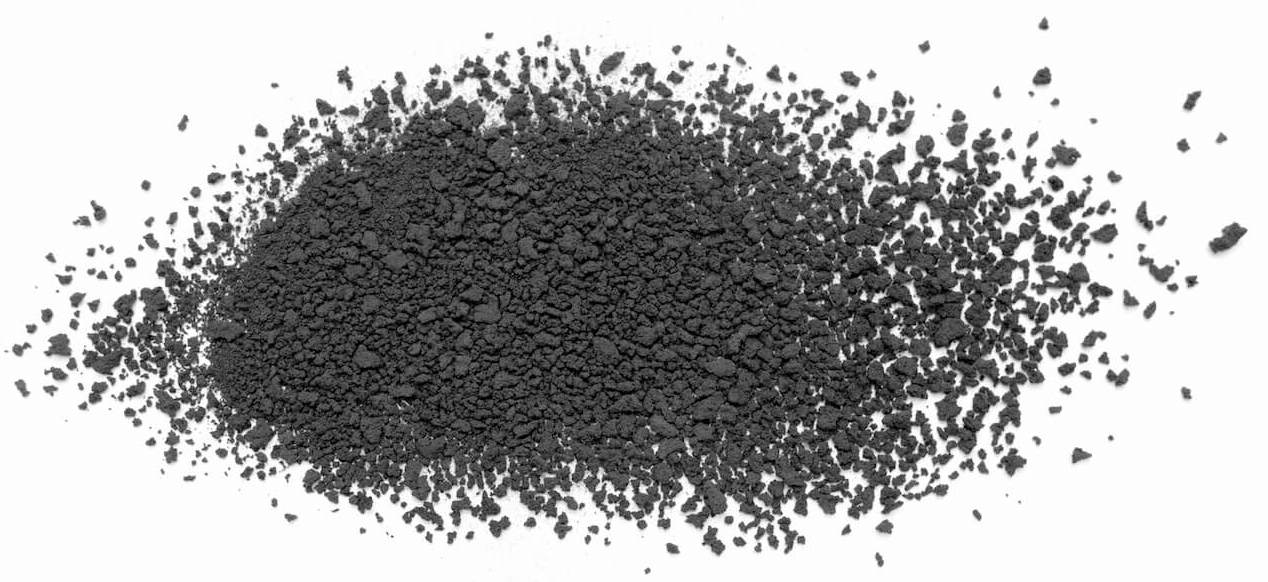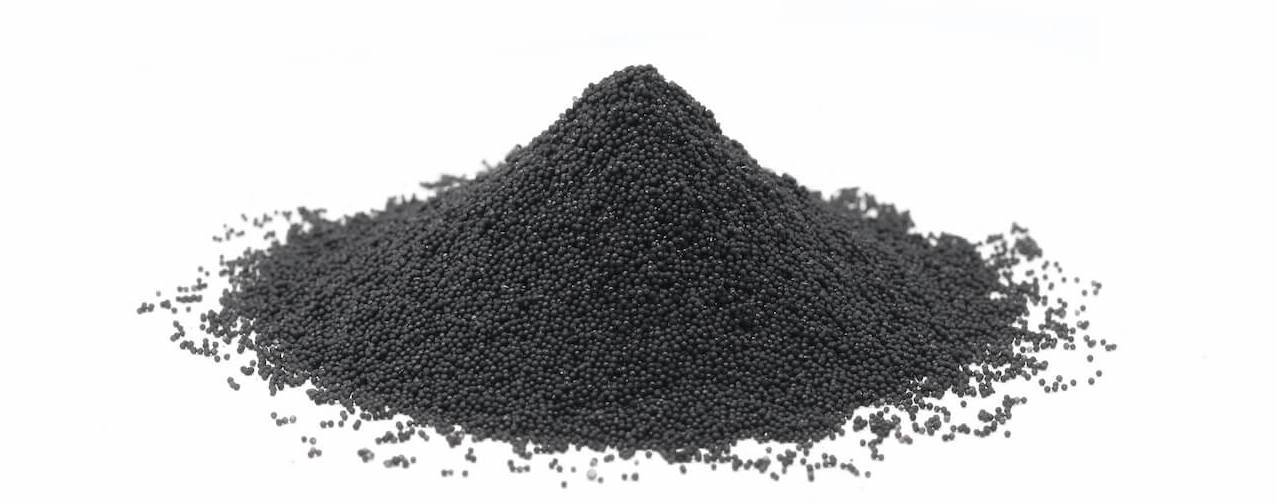Investigating carbon black and considering analogues for high-end applications
Although the global carbon black market is booming thanks to the material’s varied applications and relatively low cost, there are limitations to its use, for example in conductive applications. Could novel additives, such as single-walled carbon nanotubes, overcome these drawbacks and one day displace this popular material?
When hydrocarbons such as oil and natural gas are partially combusted or decomposed under controlled pressure and temperatures, carbon black is produced1. It consists of a fine, black powder of nearly pure elemental carbon2, as well as small amounts of sulphur, nitrogen, oxygen and hydrogen. Different categories or subtypes of carbon black include furnace black, channel black, thermal black, acetylene black and lamp black, with furnace black representing the most widely used subtype3. Carbon black has been in commerce for more than a century4 and has a variety of uses in everyday and industrial products. It’s an important component in making numerous everyday products stronger, deeper in colour and longer lasting. A key application is in the automotive industry where it is used as a reinforcing agent in tires and rubber products. Carbon black is also broadly used as a pigment due to its colouring properties and to stabilise polymers against Ultraviolet degradation. New applications and technologies are emerging with, for example, researchers in Singapore exploring the possibility of carbon materials, including carbon black, being used as an analogue material for graphene5 and there is also future potential for carbon nanotubes to replace carbon black in certain applications6.
Pondering carbon black production and properties
Around 1.5 million tons of carbon black are produced annually7 and the production process typically involves the partial burning and pyrolysis of low-value oil residues at high temperatures and under controlled conditions8. The furnace black process is the most commonly used procedure in industry and involves partially combusting a raw material (generally a residue from petroleum distillation or cracking) in a heat supply via a furnace9. The highly controlled nature of the production process means that specifically engineered aggregates of carbon particles can be produced, with different primary particle sizes, aggregate sizes, porosity and surface chemistry10 according to the properties required, while also ensuring quality. Indeed, carbon blacks vary significantly in particle size depending on reactor settings and the type of process by which they are made11, with the size of particles in the manufacturing process ranging from 10 nm to around 500 nm. During the process, these particles fuse into chain-like aggregates, which is how the structure of individual carbon black grades is defined12.

Carbon black is one of the most widely used carbon fillers due to its electrical conductivity, low cost and abundance. It is used in a varied group of materials to enhance their physical, electrical and optical properties13. For example, in its use as an additive to enhance material performance, it can improve conductivity, viscosity, static charge control and UV protection. It is also valued for its reinforcement abilities – making it an excellent reinforcement agent – resistance to wear and because it is chemically inert and insoluble to water. Speciality carbon blacks, which are also known as pigment carbon black, with specific purities and other characteristics, are used as a black pigment in the coatings, polymers and printing industries.
Reviewing market status
The global carbon black market is booming. According to a recent report, it reached a value of US$15.7 billion in 2021 and is anticipated to reach US$21.8 billion by 202714. This is primarily driven by growing demand from the expanding automotive industry, with carbon black used in the sidewalls, inner liners and treads of tires to increase strength and durability15. The growing rubber industry is also affecting demand, with rising demand for carbon black materials in the manufacture of products such as air springs, gaskets, hoses and belts16. Another contributing factor is an increasing need for conductive properties and UV protection in plastic products and, looking ahead, demand is also expected to grow in the paints and coatings industry, with rising need for jet black paints and properties such as colour stability, thermal stability and solvent resistance17. At present, there is a large number of carbon black grades in use in industry and the demand for high-quality, super fine carbon black is increasing18.
The global market is dominated by Asia-Pacific, with the largest demand in China (nearly 33 per cent of the global carbon black production capacity) and India19. Looking at the carbon black market in Europe, new applications and technologies are the driving force of the flourishing market with, for example, increasing uses in lithium-ion batteries, construction and metallurgy20. With future tyre innovations including improved low rolling resistance, which requires tyre weight reduction and aerodynamics, this market is predicted to continue to develop apace in the coming years21. The carbon black market is advancing in tandem with technological development, with the emergence of more and more R&D initiatives that are exploring novel, cost-effective methods of producing carbon black and pushing forward the market22. Another potential future area of opportunity is the rise in electric and self driving cars23.
Analysing carbon black applications and prices
The applications of carbon black span a number of commercial and consumer products. In addition to its multiple uses in the automotive industry, including strengthening the rubber in tires, as well as shielding them from UV rays and oxidation, further uses are as a pigment, conductive or insulating agent or UV stabiliser24. Common everyday uses, aside from in tyres, are in automotive and other coatings, hoses, plastics and printing inks. In the printing industry, it is used both as a pigment and to achieve the viscosity required for optimum print quality. A primary use for carbon black is as a reinforcement and performance additive in rubber products25. Indeed, it is the predominant reinforcing agent in rubber products, with around 30 per cent of most rubber compounds containing carbon black26. Carbon black is also used in polymer compounds in electronic devices27 and resistors for chemical circuits, as well as in shielding layers of power cables and to improve the thermal insulation properties of polystyrene, which is heavily used in construction28.

In addition to being widely used, carbon black is also cost effective. However, inevitable price increases are occurring due to the continuous rise in the price of raw materials29. Indeed, earlier this year, two European producers – Orion Engineered Carbons and Cabot Corporation – announced price increases for all major grades of carbon black30.
Delving into innovations and analogues
Despite the useful properties of carbon black and subsequent widespread applications, current market trends show a growing number of applications that require higher, more uniform, and stable electrical conductivity without degrading mechanical and aesthetic properties such as elasticity, durability, transparency or colouration ability. Automotive and aerospace, construction and infrastructure, electronics and semiconductors, extraction and processing, packaging and storage, personal protective equipment, sport, leisure and consumer goods are the industries that show the most potential for nanotubes to replace previously widely used carbon black.
Generally, the key drawback of carbon black lies in the high dosage required to reach conductivity, which can negatively affect mechanical performance and processability, as well as producing threatening dust and dark colouration. Hundreds of market products, such as primers, ESD floorings, gelcoats, PU coatings, linings, powder coatings, components made of glass fibre filled PPS and polyamide, tires, production rollers, antistatic textile, conductive silicones and rubbers, have proven that graphene nanotubes can be more advantageous than carbon black, when it comes to advanced applications.
As innovations continue, single-walled carbon nanotubes as an alternative to carbon black with a better balance of performances is an exciting emerging area to watch.
- https://menafn.com/1104724387/Carbon-Black-Market-Price-2022-Global-Share-Size-Growth-Report-2027
- https://www.sciencedirect.com/topics/chemistry/carbon-black
- https://chempedia.info/info/furnace_carbon_black/
- https://www.sciencedirect.com/topics/chemistry/carbon-black
- https://www.european-rubber-journal.com/article/2072817/is-carbon-black-an-analog-for-graphene-researchers-think-so
- https://www.compositesworld.com/articles/graphene-nanotubes-enhance-conductivity-performance-of-composite-printing-sleeves
- https://chempedia.info/info/furnace_carbon_black/
- https://www.birlacarbon.com/whats-trending/carbon-black/
- Carbon Black: Science and Technology 1993 by Jean-Baptiste Donnet (Editor), Roop C. Bansal, Meng-Jiao Wang
https://www.vedantu.com/chemistry/carbon-black - https://www.bioenergyconsult.com/carbon-black/
- https://www.imerys.com/minerals/carbon-black
- https://www.bioenergyconsult.com/carbon-black/
- Ibid.
- https://menafn.com/1104724387/Carbon-Black-Market-Price-2022-Global-Share-Size-Growth-Report-2027
- Ibid.
- Ibid.
- Ibid.
- https://rieco.com/carbon-black-industry/
- https://finance.yahoo.com/news/europe-carbon-black-market-grow-150000914.html
- https://www.mordorintelligence.com/industry-reports/carbon-black-market
- Ibid.
- Ibid.
- https://www.mordorintelligence.com/industry-reports/carbon-black-market
- https://www.birlacarbon.com/whats-trending/carbon-black/
- https://www.bioenergyconsult.com/carbon-black/
- https://www.sciencedirect.com/topics/chemistry/carbon-black
- https://www.imerys.com/minerals/carbon-black
- https://www.bioenergyconsult.com/carbon-black/
- https://www.echemi.com/productsInformation/pd20150901230-carbon-black.html
- https://www.chemanalyst.com/NewsAndDeals/NewsDetails/carbon-black-prices-in-europe-to-reach-new-heights-10214